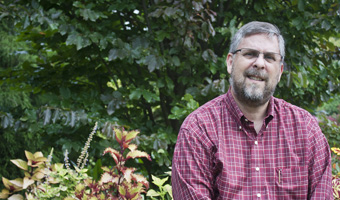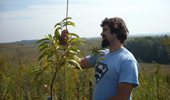Volunteers from the community are sought to help plant American chestnut trees in Wayne National Forest on Saturday, Oct. 25, from 10 a.m. till 3 p.m.
Volunteers will plant up to 750 containerized seedlings from The American Chestnut Foundation seed orchards from Meadowview Nursery in Virginia. The seedlings are the most advanced generation of potentially blight-resistant American chestnuts. Blight resistance assessment in this test planting will assist TACF in the production of blight resistant American chestnut. Hopefully, the seedlings will provide a reliable supply of nuts for future restoration plantings as part of the Wayne National Forest’s oak-hickory restoration efforts, under the 2006 Land and Resource Management Plan.
Once the mighty giants of the eastern forests, American chestnuts stood up to 100 feet tall, and numbered in the billions. They were a vital part of the forest ecology, a key food source for wildlife, and an essential component of the human economy. In the beginning of the 20th century the fungal pathogen responsible for chestnut blight, accidentally imported from Asia, spread rapidly through the American chestnut population, and by 1950 it had killed an estimated 4 billion mature trees from Maine to Georgia.
Several attempts to breed blight-resistant trees in the mid-1900s were unsuccessful. In 1983, a dedicated group of scientists formed the American Chestnut Foundation with a mission to develop blight-resistant American chestnut trees. Now assisted by nearly 6,000 members, volunteers, and partners, the organization is undertaking the planting of potentially blight-resistant trees in select locations throughout the eastern United States.
“It’s kind of exciting because it’s going to be the first big planting in the Wayne National Forest,” says Dr. Brian McCarthy, Professor of Forest Ecology and Associate Dean for Faculty, Graduate Studies and Research, told the Post. McCarthy is on the foundation’s Board of Directors.
McCarthy’s solution, the Backcross Breeding program, is a hybrid of an American Chestnut tree and a Chinese Chestnut tree, the latter of which carries the resistance gene.
Of the 750 seedlings to be planted at the Wayne, McCarthy said, 30 different genetic variations of the American Chestnut hybrid will be introduced on Oct. 25, in what’s commonly referred to as field trial stage.
“We’re planting to not only restore but to test the families,” Lee Crocker biologist with the National Wild Turkey Federation said. “To see which ones survive.”
If introduction is a success, the chapter would like to continue planting the blight-resistant species on other reclaimed Ohio lands, specifically abandoned mining grounds.
“There’s an enormous amount of land in Ohio that’s been damaged by mining—surface mining in particular,” McCarthy said. “We found that the (American) Chestnut actually grows very well on those damaged sites. And so, we’ve been working to restore the (American) Chestnut and bring back a functional forest on these reclaimed strip mines.”
Pre-Register Today
Volunteers are asked to meet at 9 a.m. at the Wayne National Forest Headquarters, 13700 US Hwy 33, Nelsonville, OH 45764, located between The Plains and Nelsonville, OH. Volunteers will be transported to the planting site located 10 minutes away along SR691.
Volunteers are encouraged to pre-register today by contacting one of the following coordinators:
- Gary Chancey, Wayne National Forest, 740-753-0862, gchancey@fs.fed.us
- Brian McCarthy, The American Chestnut Foundation, 740-593-2979, mccarthy@ohio.edu
- Lee Crocker, National Wild Turkey Federation, 740-222-3505, lcrocker@nwtf.net
Pre-registration will assist planners in coordinating transportation and equipment needs for the day.
The tree planting is sponsored by the U.S. Forest Service’s Wayne National Forest and Northern Research Station, along with the Ohio Chapter of The American Chestnut Foundation and the National Wild Turkey Federation.
Follow the Wayne National Forest on Twitter @waynenationalfs.
The U.S. Forest Service is an agency of the U.S. Department of Agriculture, a mission of sustaining the health, diversity and productivity of the nation’s forests and grasslands to meet the needs of present and future generations. The Forest Service’s Eastern Region includes twenty states in the Midwest and East, stretching from Maine, to Maryland, to Missouri, to Minnesota. There are 17 national forests and one national tallgrass prairie in the Eastern Region.
The U.S. Forest Service manages 193 million acres of public land, provides assistance to state and private landowners, and maintains the largest forestry research organization in the world. Public lands the Forest Service manages contribute more than $13 billion to the economy each year through visitor spending alone. Those same lands provide 20 percent of the nation’s clean water supply, a value estimated at $7.2 billion per year. The agency has either a direct or indirect role in stewardship of about 80 percent of the 850 million forested acres within the U.S., of which 100 million acres are urban forests where most Americans live.



















Comments